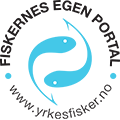Risk assessment
Work on board shall be arranged and organized so that the safety and physical and mental health of the workers is ensured.
Hazards on board shall be identified and an assessment of the risk represented by the hazard shall be made to establish the level of risk they might pose. The results of the risk assessment must be documented in writing, ref. Regulation of 1 January 2005 concerning the working environment, health and safety of workers on board ship, § 2-2 (NMA website).
General causes for accidents on board fishing vessels are that people slip on slippery surfaces, fall down/loose balance due to rough seas, are subject to crush injuries or are hit by falling objects.
This is among others, due to the fact that it is more risky to work on work platforms in motion on board a fishing vessel, than in a workplace on shore with firm ground under one’s feet.
It is important to ask oneself whether there is anything that can be done to make work onboard less dangerous. What measures can be taken to remove potential sources of danger that may cause injuries? What else can be done?
Tools
The program FiskRisk.no is a help tool to identify dangers associated with the various work tasks carried out onboard your vessel. You get help to assess risk and to draw up action plans in a systematic manner so that you can take precautionary measures to avoid undesirable incidents in your workplace.
Template for risk assessment
Here you find word-templates for how to structure a risk assessment of your own vessel. Use the templates (making adjustments to fit your own vessel) as they are, or use them as an inspiration in the preparation of your own risk assessment.
- Risk assessment for net fishing
- Risk assessment for long-line fishing
- Risk assessment for seining
- Risk assessment for trawling
Template for risk assessment is meant to be a help tool when the crew work through and discuss the elements of risk identified in connection with work operations on board. There are many methods for risk assessment. This template only serves as a guideline and is not the only answer to how a risk assessment should be carried out. Individual adjustments to vessel, work methods and equipment will always be required.
Why should a risk assessment be carried out?
Pursuant to the regulation concerning the working environment, health and safety of workers on board ship laid down by the Norwegian Maritime Authority (NMA website), work on board shall be arranged and organized so that the safety and physical and mental health of the workers is ensured. Hazards on board shall be identified and an assessment of the risk represented by the hazards shall be made. The results of the risk assessment shall be documented in writing.
It is the responsibility of the master to ensure that risk assessments are carried out in cooperation with the crew.
Unfortunately, many accidents involve beginners. The risk assessment shall be used in the training of new crew members before they commence work. It is very important that they in advance, are thoroughly introduced to the work tasks they are expected to carry out, ensuring also that they know the elements of risk on board.
This is how a risk assessment can be used:
- When reviewing the work operations and sub-operations on board in a systematical manner, one gets a better understanding of the operations. Such reviews and discussions will also contribute to forming good attitudes towards safety within both the crew and the management on board. Identifying problem areas also gives the opportunity to prevent. Can the work be carried out in a different and more secure manner? Are there technical solutions that may remove hazards or reduce risk to a minimum?
- When defined work tasks pose a «special risk» to the crew, a written risk assessment/plan of action and possibly also safety instructions, shall be prepared and complied with.
- When new crew members sign on, the master and the new crew members shall review the work tasks for which special risks for safety and health has been defined. Such a review must also be carried out with the crew members who have not taken part in the preparation of the risk assessment.
Remember!
Risk assessments shall be revised on a regular basis and always when new work equipment or new technology is introduced, or when changes in the organization of the work are made that may be of consequence to the safety and health of those who work on board.
Risk assessment with FiskRisk
The application FiskRisk is a useful tool for charting risk associated with operations carried out on your vessel.
Read more
 Yrkesfisker
Yrkesfisker